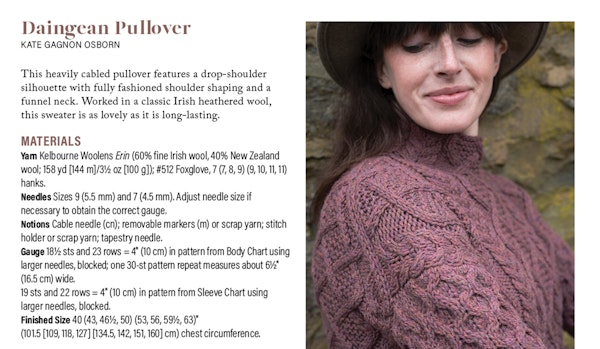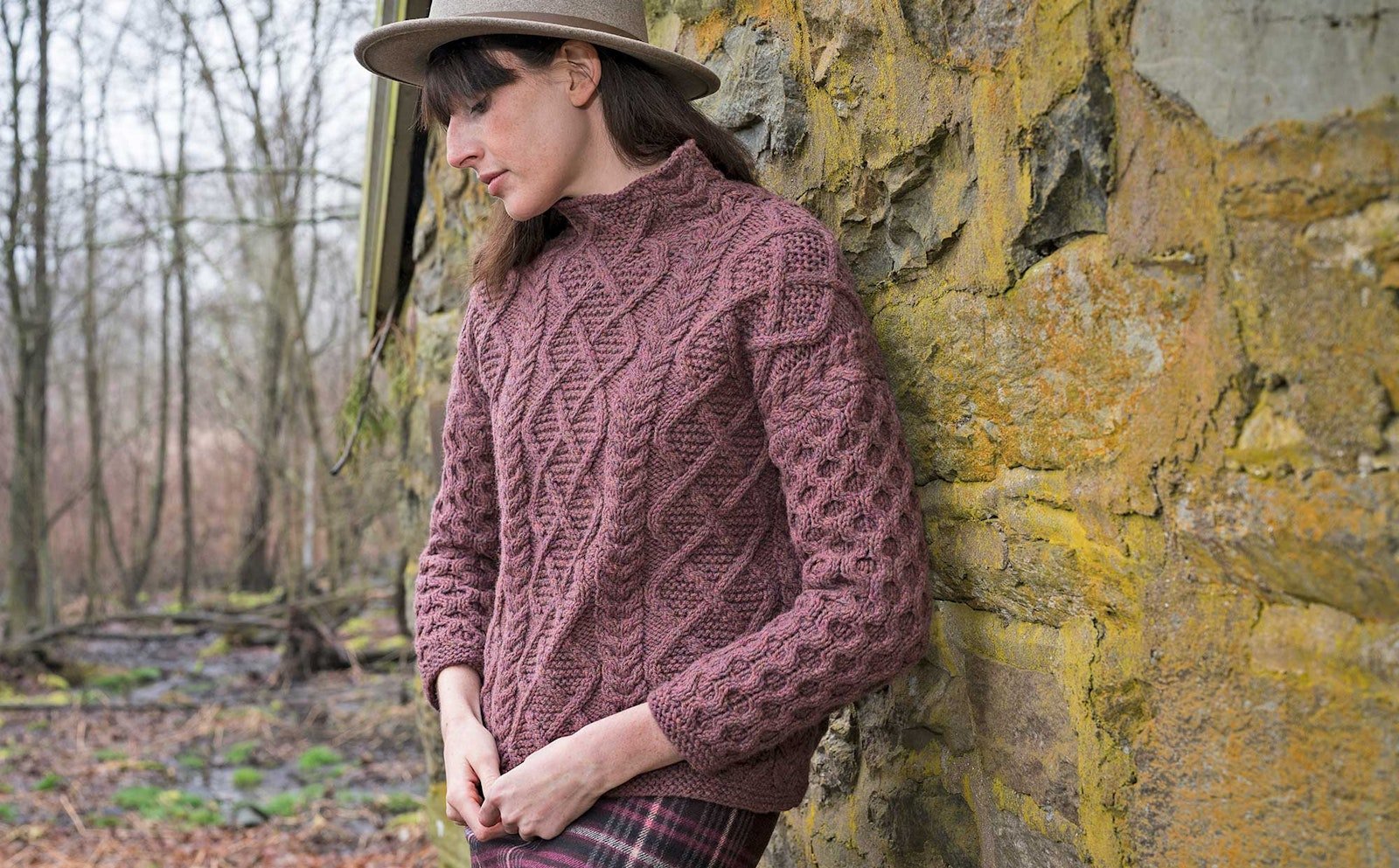We are in love with Kate Gagnon Osborn’s cabled pullover featured on the cover of the new issue of Farm & Fiber Knits. Named after an Irish town west of Dublin, Daingean is knitted in a new heathered yarn from Kelbourne Woolens.
Erin is spun in Donegal, Ireland, and straddles the line between heavy-worsted and light-bulky weight; the label gauge is 12–16 sts = 4" (10 cm). Where classic tweed yarns associated with Donegal have flecks and nubs of bright, cheerful colors, this heather is a smooth yarn with those classic color variations carded and integrated into each of the plies. (I talked a bit about the differences between tweeds, heathers, and marls a while back.) The overall effect from afar is more solid, while a closer look reveals a complex palette of colors that were dyed in the wool before blending.
Interestingly, Erin is a blend of wools from Ireland and New Zealand. Dublin-based Vawn Corrigan tells us more in her article, “Exploring Donegal Tweed,” in the new issue:
Native Irish sheep, including the Galway and Roscommon breeds, were developed well over a century ago. As a result of the country’s year-round damp climate, the sheep that thrive here have strong, coarse fleece. Irish-grown wool is best suited to outer garments, upholstery, home interiors, carpets, and furniture. When it is spun for use in finer textiles for clothing, Irish wool is skillfully blended with other fibers—merino wool from Spain, South Africa, and New Zealand, for example—to give it the softness that contemporary tastes demand. Donegal yarns regularly use cashmere, lamb’s wool, merino, British wool, New Zealand wool, and Irish wool. Knitters find that these mixed-fiber yarns provide the body and definition that suit Irish knits so well.
 Erin is a heathered yarn spun in Ireland.
Erin is a heathered yarn spun in Ireland.
A Closer Look: The Daingean Pullover
For a heavily cabled sweater, heathered yarns add depth without distracting from the stitchwork. At first glance, this pullover certainly looks complex with several different types of cables beautifully connecting both the sleeves and funnel neck. However, the way the cable stitches and rows are arranged, it is more straightforward that it might seem at first glance.
Looking at the chart, I see that the vertical cable columns and the traveling cables that make up the center motif are arranged so that they occur every right-side row or every other right-side row. This kind of arrangement means that you don’t need to be tied to your cable chart once you get comfortable with the pattern. When cable charts fit so nicely together, I find it much easier to find my groove. Working without a cable needle also helps me find a smooth cable rhythm. Check out our tutorials for working different cables without a needle here.
If you’ve conquered a simple cable hat (there are a few great options in the library) and want to try something larger and more challenging, this is a great next project to put in your queue!
 Knit a dreamy cable sweater for this winter.
Knit a dreamy cable sweater for this winter.

Subscribe today to receive the inaugural print issue! Check out the patterns from the issue in the Library.
Kate Larson, editor of Spin Off, teaches handspinning around the country, has published knitting patterns in books and magazines, and spends as many hours as life allows in the barn with her beloved flock of Border Leicesters.

